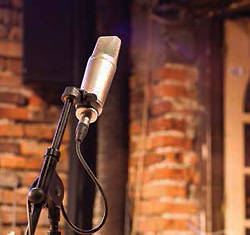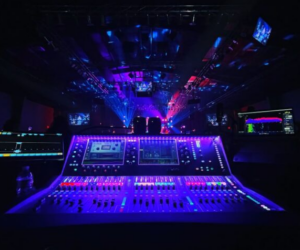Perhaps more than any other pro audio component, microphones are a personal choice, subject to the specific preferences and goals of both users and sound techs/engineers.
Manufacturers continue to create new mics in a wide range of formats, sizes, and price points, stemming from a healthy mix of innovative development, refinement of previous technologies, specialization of mics to specific applications, and changes in manufacturing.
For decades, dynamic mics were pretty much the exclusive choice for live applications due to their ruggedness. Live engineers didn’t want to take delicate, expensive condenser mics on the road. That’s changed in a big way now that condensers have been made more robust and roadworthy, and they’re quite capable of handling a wide range of live applications. More tools to help produce the desired result is indeed a good thing.
Over the years, we’ve focused on the principals of dynamics and condensers, along with ribbon and figure 8 designs – and everything in between. Rather than revisit that territory here, we encourage you to visit Microphone World here on PSW, which provides more than 150 reference articles focusing on “all things microphone” – not just designs (although there’s plenty of that) but also a wide range of applications, techniques, history, and engineer/tech interviews. Related topics are also addressed, including cabling, phantom power, stands and mounts… well, you get the idea.
Certain mics perform “better” in certain applications, although there are few hard and fast rules. Again, a lot of mic selection comes down to individual preference and meeting a specific need. LSI church sound editor Mike Sessler shared an anecdote in a ProSoundWeb post a couple of years ago that gets to the heart of the matter:
“When we bought our new wireless system, I specified a capsule that I planned on using for our worship leader. Turns out, it doesn’t work for him. And as we’ve tried it on many of our vocalists, it doesn’t work for most of them either. In fact, some of them really don’t like it. So here we have a capsule that costs over $500, and for the most part, we and most of our singers prefer capsules that sell for less than half that. Quite honestly, I’d be really ticked if I had ordered 10 of those capsules instead of 10 of the others based on the notion that more expensive = better. In fact, I’m going back and ordering a few more of the less expensive ones, because in our PA, with our singers, they are a superior choice.”
The specifics of each application also impact mic choices. For example, in some acoustic music situations, a drum kit can be viewed as a single instrument, captured with a pair of mics in a stereo configuration (or a single stereo mic). They pick up the kit as a whole, and the balance among the various pieces depends more upon the drummer.
On the other hand, a drum kit can be viewed as a collection of individual instruments, picked up with close mics applied to each drum. Or, perhaps a combination of area and close miking is most fitting for the performance. In each of these applications, success or failure is primarily based upon mic selection and placement (along with the skill of the mix engineer, of course).
But what are the specific mics selected? Beyond the one common component – drums – the specifics of these applications vary widely. It’s not enough to select mics designed and marketed for drums and then assume it will work out for the best. Mic selection is often a matter of trial and error, requiring hands-on investigation.
And as Ken DeLoria noted in a recent article about mic selection, “Whenever you have available time, don’t hesitate to try a second, third, or even a fourth mic on a given instrument. In this way, you can compare it to your go-to selection in real time, at a real event (or at least at sound check). You may just find some surprising results.”
The purpose of this installment of Real World Gear is in line with that thinking, to provide a solid starting point for the process by highlighting a wide variety of microphone designs that deserve further consideration. Enjoy our photo gallery tour of numerous models.
















